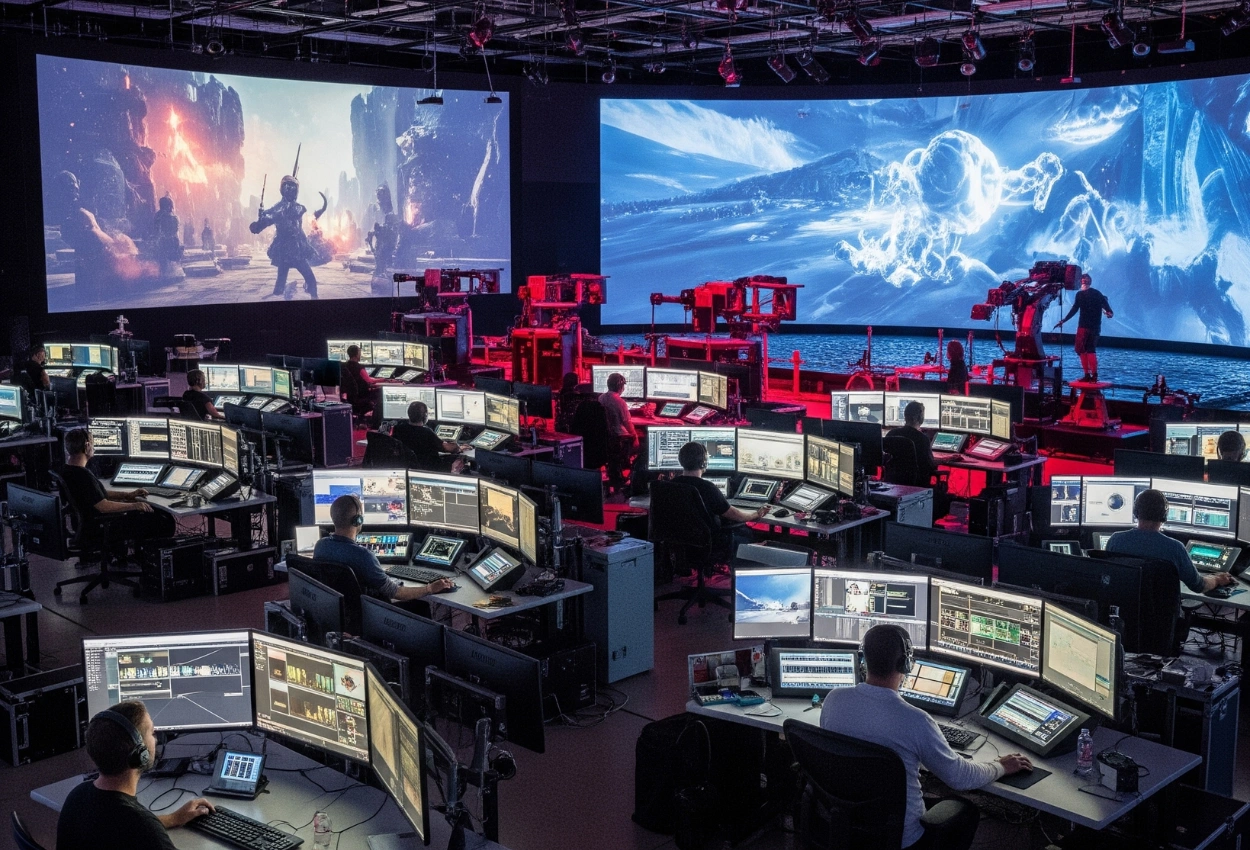
5 Stunning Visual Effects in Film That Changed the Course of Storytelling
You have witnessed the impressive visual effects in many movies, and now several VFX Studios are working to create stunning visuals in every film. Every film needs VFX work or CGI to refine and finish the final output. But here, we will discuss five movies in the sequence of their release and how these VFXs from the respective Visual Effects Companies changed the course of storytelling in the film industry. We will break down the VFX done in these movies on a particular scene to give depth to it. Let us get into the depths of these techniques and how they appeared on the big screen.
Five Stunning Visual Effect Movies By Respective VFX Studios
1. The Matrix (1999)
Bullet Time Reimagined:
The “bullet time” effect scene from “The Matrix” was the most stunning and unique creativity at that time. This most groundbreaking VFX scene in film history was created by using a rig of still cameras arranged in a circular arc and filling in 3D environments with CGI to simulate a time-freeze effect. The wires used to support actors were cleaned up to create a seamless scene using rotoscoping.
The VFX Techniques Used in this film are
- Bullet Time Photography,
- Wire Removal via Rotoscoping,
- CGI for 3D Environmental Enhancements,
- Match Moving and 3D Compositing.
This innovation became a global phenomenon and influenced many action sequences across cinema, gaming, and advertising.
2. Avatar (2009)
The Future of Virtual Production:
The film Avatar is a creation of James Cameron with his shooting and post-production team. Weta Digital set the new standard for digital environments and developed sophisticated performance capture systems that used real-time rendering and performance capture to use actual actor movements and facial expressions into detailed 3D characters and the parallel world of Pandora.
VFX Techniques Used in cinema-changing films are
- Motion Capture (MoCap),
- Facial Capture,
- CGI world-building,
- Real-time Rendering with Virtual Cameras,
- Depth Compositing & Ray Tracing.
It inspired a wave of films to adopt immersive world-building techniques by showcasing the future of 3D storytelling techniques.
3. Inception (2010)
Dreams Within Dreams:
Christopher Nolan directed Inception is a movie about relationships, which is represented by creating surreal elements of manipulating gravity by folding cities, bending architecture like strangled thoughts in the mind. It used both real-world effects and computer-generated imagery. The hallway fight scene was one of the most discussed scenes in the movie, of how it was created using a feat of in-camera ingenuity blended with seamless visual effects. In order to maintain realism in altered gravity and blend actors with moving environments, they utilized roto and wire removal.
VFX Techniques Used in this mind-boggling scene are
- CGI for Architectural Folding,
- Rotating Set for Practical Effects,
- Rotoscoping and Matte Painting,
- Slow-Motion and Time Manipulation
The film showed that using VFX Company experience effectively can support storytelling by blending fantasy with realistic scenes.
4. Life of Pi (2012)
Creating a CG Tiger That Feels Real:
Ang Lee’s most loved character in Life of Pi is a CGI-generated tiger that gave one of the moving performances. For that purpose, Rhythm & Hues received an Oscar for making a digital animal that could realistically interact with a human character in a small space.
The VFX Techniques Used in this journey of Richard Parker and Pi are
- CGI Tiger named Richard Parker,
- Fluid Simulation for Ocean Scenes,
- Lighting Simulation & HDR Imaging,
- Digital Fur Rendering,
- Motion Reference Tracking.
This masterpiece showed how we can evoke emotion and realism also with non-human characters.
5. Avengers: Endgame (2019)
Epic Scale and Digital Doubles:
How can you forget the climax scene of this epic saga’s endgame, where Hundreds of characters were fighting with each other, and every single detail was on point with proper settings, and effects that came together in Marvel’s Avengers: Endgame. The battle scenes were the perfect example of representing what blockbuster VFX can accomplish. It was assisted by several elite VFX studios, including ILM and Weta.
VFX Techniques Used in this Endgame saga were
- Motion and Performance Capture,
- Photorealistic Digital Doubles,
- Crowd Simulation (Massive Software),
- 3D Compositing and Green Screen Integration,
- Volumetric Lighting and Particle Effects.
Make Your Final Render Worth Watching
These five films demonstrate how visual effects companies enable filmmakers to tell unique stories with improved visuals. It creates a new wave for upcoming filmmakers. These technical artworks highlight the countless opportunities that will come with collaborating with the best visual effects studios. If you want to build your imagination on a big screen as an indie filmmaker, connect with Motion Effects.
